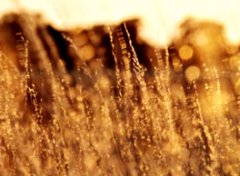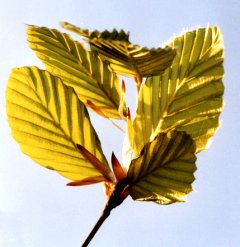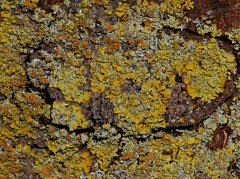Spliced feed for The Science Network |
| Moon between Mars and Saturn on May 11 [Earth & Sky Podcast] Posted: 11 May 2008 04:05 AM CDT Sunday, May 11, 2008. As darkness falls tonight, the waxing moon can be found between two planets, Mars and Saturn. Saturn lies to the east of the moon. Mars lies to the west. Saturn is brighter, and easy to notice now because it’s right next to a bright star, Regulus in the constellation Leo. This posting includes an audio/video/photo media file: Download Now |
| Biomonitors [Sciencebase Science Blog] Posted: 25 Apr 2008 07:00 AM CDT
Keeping a weather eye on atmospheric pollution is a large-scale, costly and time-consuming activity. However, there just happens to be a vast network of self-contained, self-powered units around the globe that can respond to the presence of toxins, radioactive species, atmospheric particulates and other materials in the environment and could be used to build up a local, national or international picture of environmental conditions - the world’s plants, mosses, and lichens. In a forthcoming special issue of the International Journal of Environment and Pollution (2008, Volume 32, Issue 4), researchers from various fields explain how living organisms can be used to track the dispersal of atmospheric pollutants, particulates, and trace elements. They also explain how plants and other so-called biomonitors have been validated across the globe. Writing in an editorial for the IJEP special issue chemist Borut Smodiš, a senior research associate at the Jožef Stefan Institute, in Ljubljana, Slovenia, explains how biomonitoring can be used in environments where a technological approach to monitoring is not only difficult and costly but may be impossible. “Biomonitoring allows continuous observation of an area with the help of bioindicators, an organism (or part of it) that reveals the presence of a substance in its surroundings with observable and measurable changes (e.g. accumulation of pollutants), which can be distinguished from the effects of natural stress.” Smodiš points to numerous other advantages of biomonitoring: “Simple and inexpensive sampling While any organism might be used as a biomonitoring agent, Smodiš points out that mosses and lichens, which lack root systems, are dependent on surface absorption of nutrients. This means that they accumulate particulates and dissolved chemical species from their surroundings rather than from the soil and so could be more appropriate biomonitors for atmospheric pollutants. In 1998, the International Atomic Energy Agency part of the United Nations, started a Coordinated Research Project on biomonitoring. Several papers in the special issue of IJEP detail methodologies, case studies and other aspects of various projects within this initiative and point to future avenues that might be explored.
In the paper “Atmospheric dispersion of pollutants in Sado estuary (Portugal) using biomonitors”, Maria do Carmo Freitas of the Instituto Tecnológico e Nuclear Reactor, in Sacavém, Portugal, and colleagues used instrumental neutron activation analysis (INAA) and proton-induced X-ray emission (PIXE) to investigate pollutant levels in epiphytic lichens. They found that temperature and humidity had a more prominent effect on pollutant accumulation than wind direction or rainfall levels, which could affect the interpretation of other biomonitoring results. Ni Bangfa of the China Institute of Atomic Energy, Beijing, and colleagues in their paper “Study on air pollution in Beijing’s major industrial areas using multielements in biomonitors and NAA techniques” used NAA to analyze three types of plant leaves from Chinese white poplar, arborvitae, and pine needles. They found that northeast Beijing is a clean area while southwest is relatively polluted. In “Biomonitoring in the forest zone of Ghana” B.J.B. Nyarko of the Ghana Atomic Energy Commission and colleagues studied the distribution of heavy metals in agricultural, industrial and mining areas in the first survey of its kind in Ghana using lichens as biomonitors. They found that the area around gold mining regions were most heavily polluted, with arsenic, antimony, and chromium while industrial sites had raised levels of aluminum, iron, and titanium. Farming regions were much less affected by heavy metal pollutants, as one might expect. H.Th. Wolterbeek of the Delft University of Technology, Delft, the Netherlands in ” Large-scale biomonitoring of trace element air pollution: local variance, data comparability and its relationships to human health” used biomonitoring data to determine air concentrations and metal deposition and discussed how such studies might be used in the future to correlate pollution with human health issues. Other researchers including Bernd Markert of International Graduate School Zittau, Zittau, Germany, Eiliv Steinnes of the Norwegian University of Science and Technology, in Trondheim, and their respective teams also further validated the potential of biomonitoring approaches to pollution.
While biomonitoring techniques are improving rapidly and researchers are quickly validating results at the local level, Smodiš points out that there is no single species that could be used on the global scale. Moreover, different weather conditions around the globe mean that techniques are not necessarily comparable. With that in mind, environmental sensor manufacturers may rest assured that there is still a market for their instrumentation despite the best efforts of the mosses and lichens. A post from David Bradley Science Writer |
| Taking the P (and the N) [Sciencebase Science Blog] Posted: 23 Apr 2008 07:00 AM CDT
Bioengineer Hong Liu of Beijing University of Aeronautics and Astronautics and colleagues Chenliang Yang, Ming Li, and Chengying Yu are working with Gurevich Yu, of the Russian Academy of Sciences, Siberian Branch, in Krasnoyarsk, to develop a more environmentally benign and potentially useful method for handling urine. The researchers point out that the direct discharge of urine into lakes and rivers causes eutrophication because of the high levels of phosphorus and nitrogen. Treating human The researchers have now turned to the blue-green alga, Spirulina platensis, well-known, but controversial, as a health food supplement with claims of beneficial effects on cholesterol levels and blood pressure. Advocates also point to clinical evidence of benefits in treating malnourishment and anaemia in children with and without HIV, in protecting the heart from the toxic effects of the anticancer drug doxorubicin in chemotherapy, and even in preventing hay fever. Spirulina platensis, now classified as Arthrospira (Spirulina) platensis (Nordstedt) Gomont does indeed contain several vitamins and minerals in large quantities, has a high protein content, and contains just 5-6% of good quality fat. Previous researchers have shown that this alga can grow on nitrogen-derived from urea (the nitrogen-containing component of urine) to release oxygen and produce solid biomass as it does so. Liu and colleagues have now optimized the alkalinity of the fermentation mixture of Spirulina platensis to pH 9.5 as well as determined the best urine dilution ratio for most rapid growth. They warmed the brew to between 28 and 30 Celsius and bathed it in red and green light from an array of light-emitting diodes (LEDs). This stimulated metabolic activity. They were able to convert 99.99% of urine samples at the optimum dilution into solid biomass using Spirulina. “Our future focus will be to make Spirulina platensis consume the nutrient component more quickly and to obtain more biomass,” the researchers say. They add that, “Spirulina platensis can be used as fertilizer, bait, and even a food and health product, is of great economic value.” There could be a large market for urine-made Spirulina as an agricultural fertilizer or fish bait but perhaps this particular production method will not suit health food advocates. In fact, I’d go so far as to say they really are taking the P. Would you eat a health food made from human urine? A post from David Bradley Science Writer |
| You are subscribed to email updates from The Science Network To stop receiving these emails, you may unsubscribe now. | Email Delivery powered by FeedBurner |
| Inbox too full? | |
| If you prefer to unsubscribe via postal mail, write to: The Science Network, c/o FeedBurner, 20 W Kinzie, 9th Floor, Chicago IL USA 60610 | |



 Urine is a problem. Huge volumes are flushed, with fresh water, into the world’s sewage systems and then enormous volumes of yet more water are used to treat the waste along with solids. However, writing in a forthcoming issue of the Inderscience publication, International Journal of Biotechnology (2008, 10, 45-54, in press, fellow journalists can email me if they want an advance copy of the paper) researchers in China and Russia describe how microbes could be used to convert liquid urine into a phosphorus and nitrogen rich biomass for use as feed, fertilizer and fuel.
Urine is a problem. Huge volumes are flushed, with fresh water, into the world’s sewage systems and then enormous volumes of yet more water are used to treat the waste along with solids. However, writing in a forthcoming issue of the Inderscience publication, International Journal of Biotechnology (2008, 10, 45-54, in press, fellow journalists can email me if they want an advance copy of the paper) researchers in China and Russia describe how microbes could be used to convert liquid urine into a phosphorus and nitrogen rich biomass for use as feed, fertilizer and fuel.
No comments:
Post a Comment